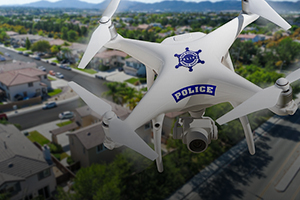First-Responder Drones

Drones have been widely used by police agencies for years. Typically, such drones are dispatched on location and manually controlled by an officer to assess a situation before sending in personnel. But a new type of drone has come on the scene that employs many of the same technologies used in self-driving cars to navigate to and from a location on its own.
When an emergency call comes in, such a drone can be dispatched automatically from a central launch pad. Typically, federal and local laws require that such flying be done by a certified pilot, and that a police officer be present on location to carry out any investigation. The Federal Aviation Administration (FAA) also has laws in place to prevent interference with other aircraft by requiring that pilots only operate drones within line of sight. But some municipalities have obtained waivers enabling them to operate these self-navigating drones from as much as three miles away.
Policing at a distance has become an integral component of law enforcement during the pandemic to limit risk of exposure, but many agencies are considering drones as a more efficient and less costly way to police urban areas in the long term as well. Of course, such remote policing techniques raise questions about privacy and human rights, as they permit law enforcement to gather and store information on anyone, anywhere — with or without cause. Currently, departments using these drones are treating all information obtained just as they do body-cam data — that is, as evidence to be released only with approval. But the potential exists for parts of a community to be unfairly targeted. As always, it’s not the technology … it’s how you use it.
For more information, visit https://www.police1.com/ or https://www.police1.com/police-products/police-drones/articles/deploying-a-drone-as-a-first-responder-vpqwfc9T2AFvmfLV/